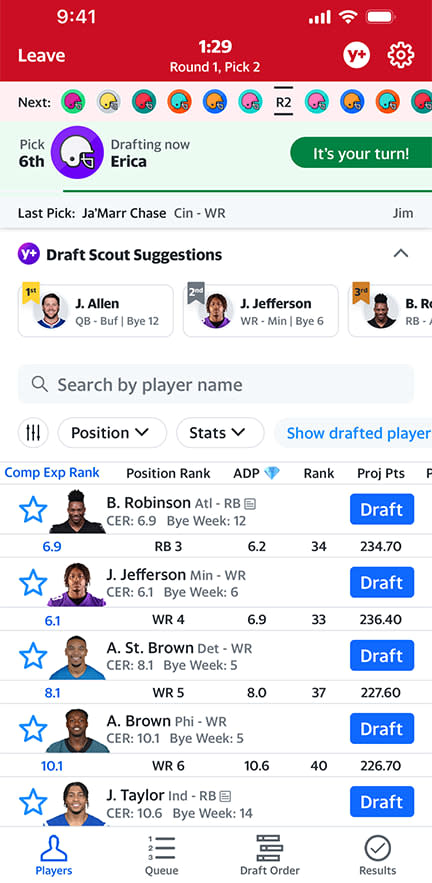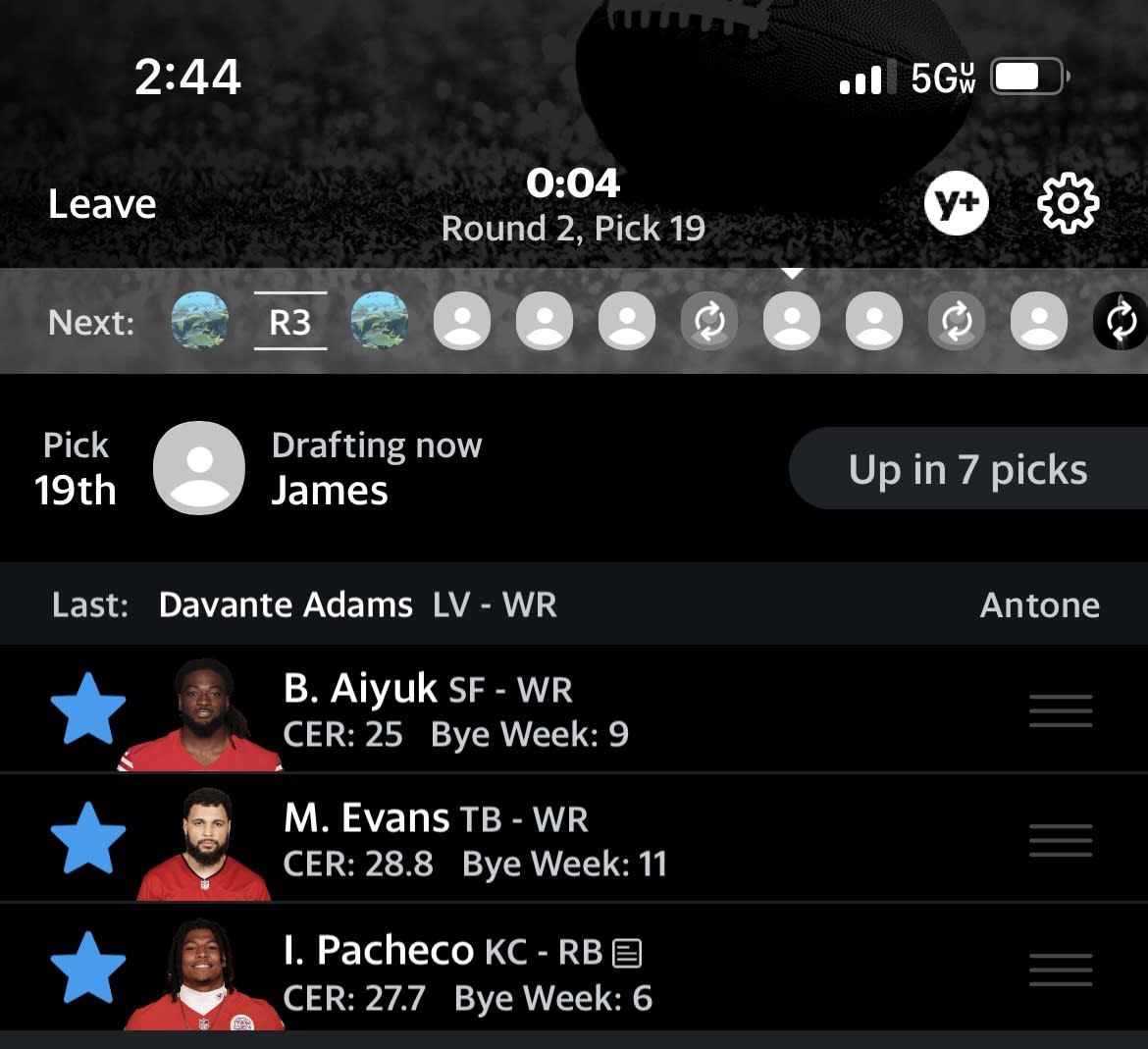Fantasy University: Course 102 — How to draft in fantasy football
Congratulations on wrapping up the 101 course at Fantasy University! You’ve joined or created a league, and you have a team ready to be rostered with the many NFL players who will define your fantasy football season.
And that team is initially built in the draft.

How do you draft a team?
If you’re familiar with the NFL then you know that a draft is a ceremony in which incoming rookie players from college are selected by professional teams. These players then compete to secure a spot on the team — or are already drafted as starters, some with the hopes and dreams of a fanbase on their backs.
Fantasy football drafts are very similar.
In a draft, fantasy managers (AKA, you — refer to our glossary for more fantasy terminology) take turns selecting from a pool of NFL players — veterans and rookies alike — to fill out the roster spots on their fantasy teams. A default fantasy roster on Yahoo is made up of: QB, WR, WR, RB, RB, TE, FLEX, D/ST, K. There are also six bench spots. That means that a default draft is 15 rounds in order to fill every roster spot (this is also customizable).
That means that, in a draft, the goal is to fill these positions on your roster. Keep in mind, however, that it’s not necessarily the priority to complete a starting lineup and then turn to filling out the rest of your roster. Of course, in a private league, you can customize your roster and positions — positional amounts and positional limits — as you and/or the commissioner of the league see fit.
In a public league, the default settings for roster construction and scoring (more on that in our next course) are used.
You can draft online on your desktop or on your Yahoo Fantasy app (iOS download | Android download). Here, you’ll be in what is called the draft room (pictured below), where you can see the player pool, and you can also see the players drafted from every team (including yours) by selecting the different tabs. Make sure you try to get into your draft room early so you can get comfortable with your environment.

There’s also your player queue (pictured below), where you can reserve potential player selections by “starring” them; that way, you have a list of your preferred players ready when it’s your turn to draft and you’re not scrambling to decide who to take. In a worst-case scenario, your top queued player will be drafted automatically if you run out of time — the default is 60 seconds per pick.

You can also draft offline, live and in person, and once the picks are in your commissioner can input the players selected into each team. If need be, you can even auto-draft, where our system makes selections or drafts your whole team for you — we know life happens, and if you know you won't be available to draft/need to auto-draft, you can pre-rank players that the system will then use as a reference point to draft your team.
What does a typical draft look like?
Well, before we get to that, we must acknowledge the various types of drafts. The most common is a snake draft. No, no reptiles are involved. Basically, think of the infinity symbol. A 10-team league’s snake draft will have each manager picking one after the other, 1 through 10. But, once the 10th manager makes their first selection in Round 1, that person then comes right back to pick again at the 11th pick — or, the first pick in Round 2.
The person picking first in Round 1 then gets the last pick in Round 2, followed by the first pick in Round 3, and so on and so forth until the draft is complete. Make sense?
There are also salary cap drafts. This type of draft most closely mimics the NFL free agency period we see play out IRL. League managers take turns nominating a “free agent” — AKA, a player who has not yet been drafted — to receive “contract offers” for a designated salary amount. The player will “accept the offer” of — AKA, will be drafted to — the team offering the highest salary. That “salary” will then be subtracted from the manager’s total remaining budget. This process continues until every team has a complete roster, typically 15 players.
Things to remember when drafting
Want a practice run without any pressure? Try a mock draft where you can get ready for the real thing.
Can't wait to get in on the action? On-Demand Drafts offer a chance to join a league immediately and make your picks as soon as the necessary number of people join.
No matter when and where you draft, make sure you’re fully immersed and familiar with your league’s rules, settings and scoring structure. We’ll discuss points in our next course — this can make a world of difference in player value during a draft. For example, if you play in a league that awards a half-point-per-reception (AKA half-PPR and Yahoo's default scoring), then chances are you don’t need to prioritize players with a high volume of receptions quite as much as you would in a full-PPR (a point-per-reception) league. But again, more on that in our next course.
Keep fantasy rankings and ADP (Average Draft Position) data in mind, but don’t make it the end-all, be-all. Both player rankings and ADP are meant to be a guide, but ultimately, draft the players you want for your team and who you think fits YOUR draft strategy best (we’ll get into the subtleties of rankings and draft strategy in later courses).
Now, it’s time to talk about how your newly drafted team will be putting up points in your weekly matchups.
Next class ⏩️ 103: How does scoring work?
Previous class ⏪️ 101: What is fantasy football?


